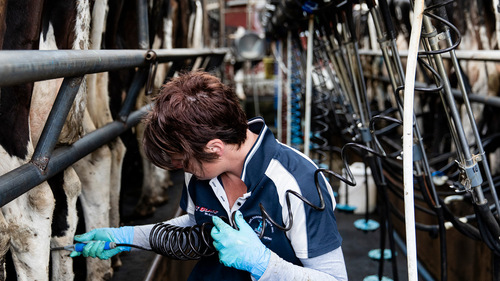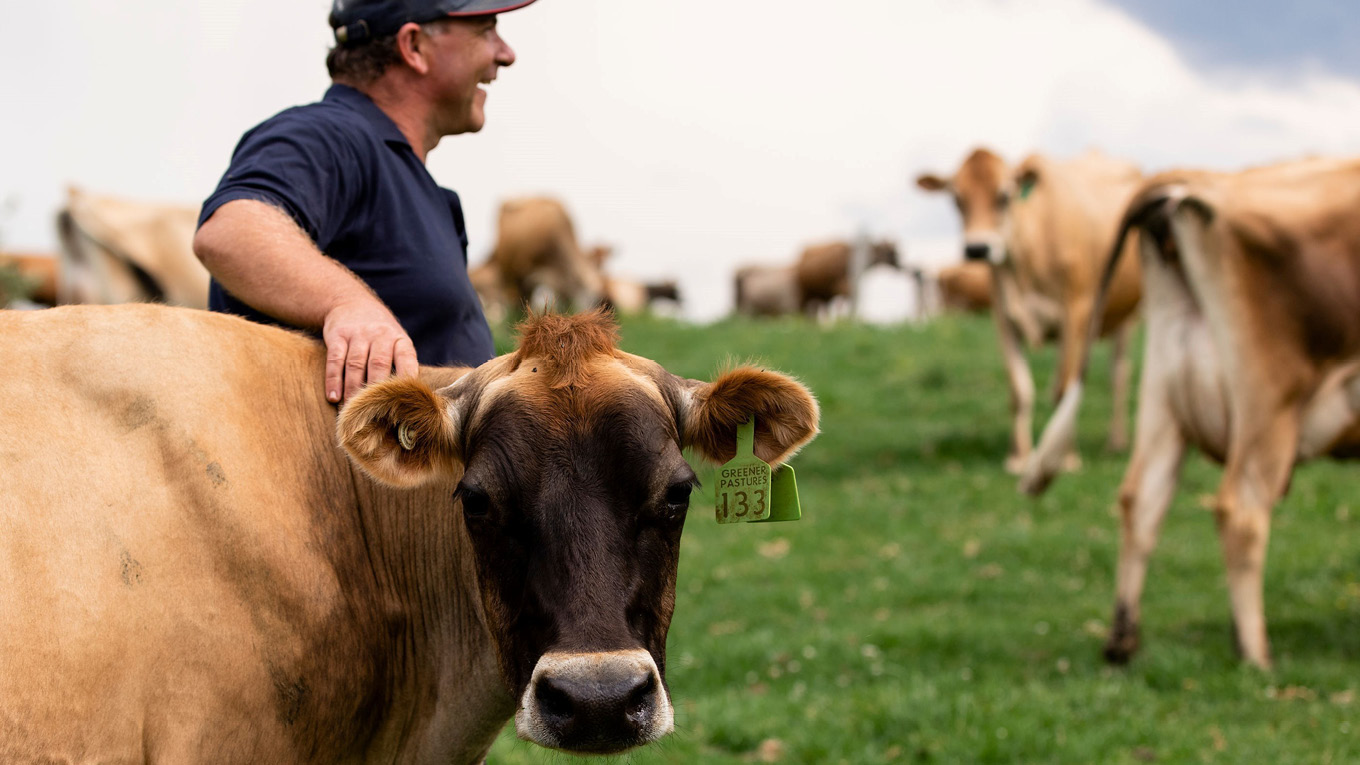Milk Cooling
Cooling milk rapidly is essential for inhibiting bacterial growth and maintaining good milk quality.
The Food Standards Australia New Zealand (FSANZ) guidelines for raw milk recommend cooling to five degrees Celsius or less within 3.5 hours from the start of milking and that milk should be kept at or below this temperature until collected.
In some states, milk that is collected within 3.5 hours from the start of milking and is above 5°C will be subject to a risk assessment by the milk processor. Milk that fails this risk assessment cannot be used for human consumption. The calculations behind the risk assessment are based on research from the University of Tasmania and are endorsed by industry.
Most food safety programs require dairy farmers to monitor and record milk cooling performance and ensure bulk tank thermometers are calibrated regularly.
It is estimated that milk cooling may account for approximately 30% of the total energy costs of operating a dairy. Energy demand and dairy operating costs can be reduced using different options that involve heat recovery from the cooling system.
Pre-cooling
Plate heat exchangers (PHE), or plate coolers, are the most efficient way to cool milk.
A PHE consists of very thin stainless steel plates whereby water flows along one side of each plate and milk flows along the other. This allows heat to be exchanged from the milk to the water via the plate.
The capacity of a PHE is adjusted by adding or removing plates.
It is very important to regularly check the effectiveness of a PHE. This can be done by comparing the temperature difference between incoming cooling water temperature and outgoing milk temperature. The difference should be no greater than 2°C.
For example, if the water entering the PHE is 10°C, the outgoing milk should be no greater than 12°C.
The temperature can be measured by applying a PVC strip thermometer to the water inflow and milk outflow. These thermometers have a paper backing on them, which is peeled off and stuck directly onto a clean, dry metal pipe.
If the plate cooler is not working efficiently it should be checked by a refrigeration technician.
It is important to maintain PHE cleanliness by always running the plant wash with a filter sock in place. Blockages caused by build up within the plates affect heat exchanger capacity and reduce performance.
Vat performance
In refrigerated/direct expansion vats, the refrigerant is pumped into the jackets (evaporators commonly referred to as dimple plates) on the internal surfaces of the bulk milk tank.
Here, the refrigerant expands as it takes heat from the milk, is pumped out of the jackets, compressed, then pushed into the condenser. The hot refrigerant is cooled by air or water flowing through the condenser fins. The cooled gas condenses into a liquid and is pumped back in to the jackets around the bulk milk tank to start the cycle again.
Direct expansion has the disadvantage of maximum power draw during and after milking, which is generally peak rate. If large electric motors are used there can be problems in areas of poor power supply.
Direct expansion refrigeration systems are pressurised, which means they require a skilled technician for maintenance.


